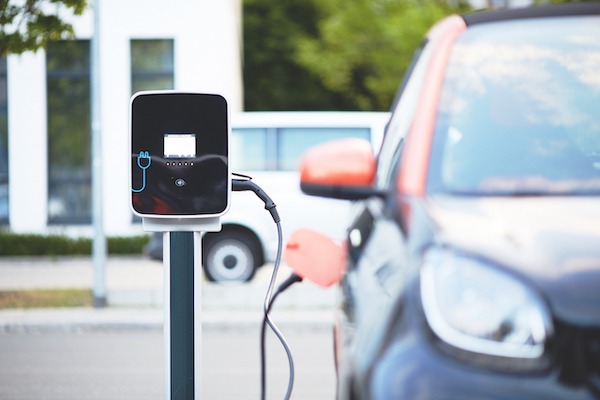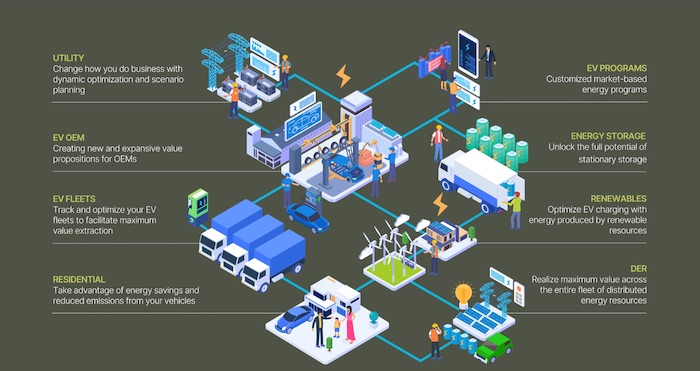The Key to Accelerated EV Adoption
Building a sustainable future isn't a puzzle solved with one solution – it’s a concerted effort among multiple industries. Electrifying the transportation sector is pivotal to achieving the bigger picture, and consumers are embracing the e-mobility movement. Last year, all-electric vehicles made up about seven percent of new car sales, marking a tipping point predicting even greater adoption.
Despite this promising shift, the journey to decarbonize our roads encounters a formidable hurdle—an aging grid. EVs demand substantial energy, with light-duty models expected to use up to 3,360 percent more electricity by 2035 than they do today. These increased requirements will exert additional strain on a grid not designed for such demands.
Some utilities are gearing up for massive infrastructure overhauls to accelerate change; however, these upgrades are costly and time-consuming, potentially delaying EV proliferation. Rather than create years-long backlogs, utilities should first consider advanced software solutions for EV charging optimization that can provide the asset-level insights they need to maximize EV uptake within the constraints of today’s distribution grid.

“Managed Charging”: Not a one-size-fits-all solution
In a neighborhood where only a few residents own EVs, utilities may initially adopt an unmanaged charging approach, allowing EV owners to charge at their convenience. Nevertheless, as the adoption of EVs accelerates within the neighborhood, the increasing load of charging poses a significant challenge for utility providers who adhere to the unmanaged approach.
Utilities often get a simple answer when aiming to solve this mismatch between EV demand and distribution grid capacity: deploy a managed charging solution. Basic managed charging platforms avoid demand charges by carefully monitoring time-of-use (TOU) rates. Using such software to coordinate EV charging schedules allows utilities to shift charging to off-peak hours, limiting the maximum draw on the grid at specific times. While this solution helps reduce charging costs for EV owners and slows the pace of required utility upgrades, it falls short of extracting the most consumer and utility value available.
When implemented properly, managed charging can be a game-changer. However, most TOU-based models do not address the entire value stack that holistic charging offers today, and can exacerbate challenges or add unnecessary costs. When multiple EVs within a service area adopt the same charging schedules, the sudden shift of this new load to the same off-peak hours can inadvertently create a second peak, greatly overloading a given service transformer.
These simplified solutions prioritize the EV owner and offer some relief, but do little to help utilities understand and optimize EV charging within the limits of existing service transformers, feeders, and substations. Enabling the grid to sustain mass EV adoption will require utilities to utilize a managed charging solution that goes beyond traditional TOU optimization at the site – one that marries the customer side of the meter with the utility’s side, optimizing critical assets throughout the distribution network.
Building a more resilient tomorrow, today
The industry’s definition of managed charging has been limited in scope, too often giving precedence to driver, vehicle preferences, and customer engagement while disregarding crucial grid challenges. In such scenarios, assets on the utility side of the meter (including transformers, feeders, and substations) are frequently excluded from the comprehensive orchestration of managed charging, whereas advanced managed charging solutions strive to strike a harmonious balance between both sides of the meter. By identifying EV charging signatures, disaggregating the EV load from the home's native load, and forecasting usage needs and charging predictability for the days ahead, the utility can be assured that EV charging is efficiently coordinated to avoid overloads and minimize energy costs. As a result, an advanced managed charging solution can increase EV charging capacity by more than 50 percent on one transformer before a physical infrastructure upgrade is needed – and further streamline the geospatial and temporal constraints for feeders and substations.

This optimization level meets the EV transition where it is today, yielding a win-win for both utilities and EV owners. For utilities, the ability to aggregate and understand charging loads at a granular level mitigates the impact of EVs on individual feeders and transformers, maximizes the utilization of existing assets, and helps guide future grid upgrades to where they are needed most. These solutions can also ensure that EV owners' vehicles do not put additional strain on an already tired grid while avoiding unplanned charging costs.
Electrifying the transportation sector is a significant step toward solving the communal sustainability puzzle. Transport emissions grew at an annual average rate of 1.7 percent from 1990 to 2022. To get on track with the Net Zero Emissions by 2050 Scenario, CO2 emissions from the transport sector must fall by more than 3 percent each year until 2030. Adopting advanced managed charging software can help achieve these goals by optimizing the use of existing grid infrastructure based on real-world charging needs, allowing for greater EV adoption at a lower cost today while further guiding the infrastructure upgrades of tomorrow.
Ken Munson is CEO of Rhythmos, a modern analytics platform that optimizes electric mobility by addressing the needs of fleet managers, operators, planners, and utility partners.
Rhythmos | rhythmos.io
Author: Ken Munson
Volume: 2024 January/February









